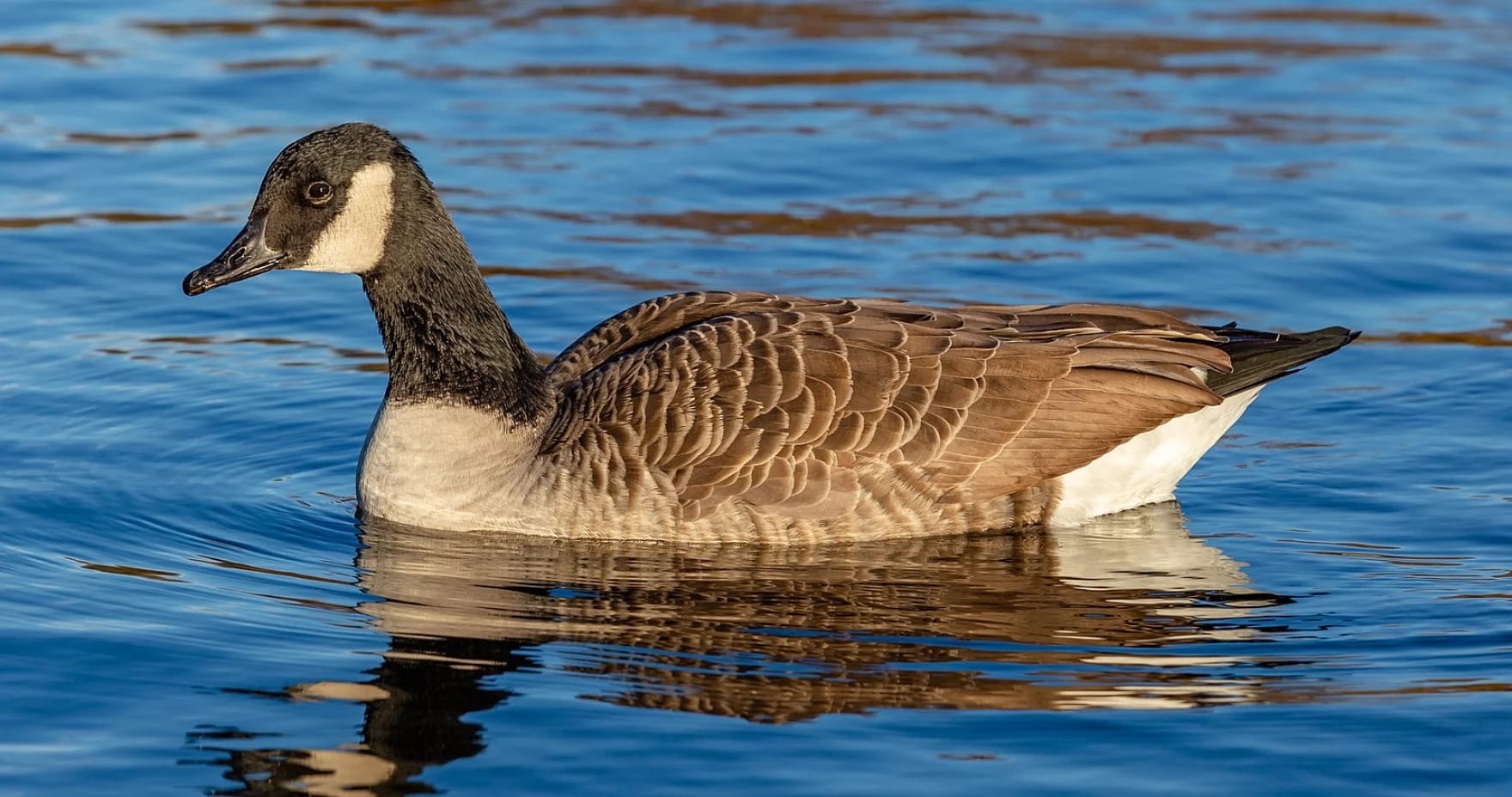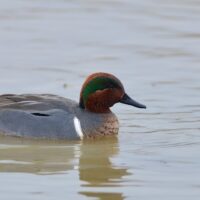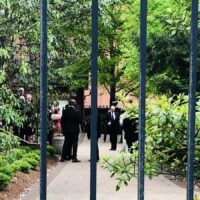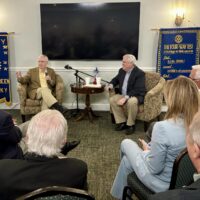In the next installment, Tracy Ross and Land Between the Lakes Woodlands Nature Station lead naturalist John Pollpeter discuss the Canada goose’s history in the area and other facts about this common waterfowl species.
Pollpeter says that while the Canada goose and its distinct appearance are relatively common in the United States — particularly in the Land Between the Lakes area — this wasn’t always the case.
“Some of the species today we may take for granted. About 100 years ago, [they were] almost extinct. If you were to write the original Endangered Species Act around 1900, white-tailed deer, turkeys, wood ducks, and Canada geese would have been on that list.

“Through conservation efforts, particularly in the 1960s, ’70s, and ’80s, TVA had a very big program in trying to bring back a number of different species,” Pollpeter continues. “Most people are pretty familiar with Land Between the Lakes and TVA bringing back the bald eagle, osprey — but they also did river otters, wild turkey, as well as the giant Canada goose, which is a subspecies that we see here.”
“The giant Canada goose almost sounds like a movie monster,” Pollpeter laughs, “but it’s the largest version of the Canada goose, and it’s a residential one. It’s the one that you’re going to see year-round at Land Between the Lakes or in parks or golf courses. The ones that tend to fly are going to be some of the smaller subspecies that come from more northern areas — the little ones that you’re going to see in the classic V shape as they’re flying south or north.”
Canada geese are “95% herbivore,” Pollpeter explains. “It’s a grazing waterfowl. That’s why you often see it on lawns eating grass. It’ll eat some pond weeds and things like that. But from time to time, they might eat some small insects or a snail, but it is not a major part of their diet.” Pollpeter says this contributes to one of their most infamous traits: “They’re big poopers. They often poop where humans are, and they can actually poop about a pound a day. But it’s a grazing animal, like a cow, and you have to get that stuff through the system.”
“Poop aside,” as Ross comments, the Canada goose has plenty of admirable traits as well — including their tendency to be monogamous. “[A Canada goose] stays with its mate year after year. The female will lay the eggs, and she’ll incubate them and stay low. She’ll lower her neck down and keep a low profile so she doesn’t attract predators.”
“The male will probably be seen standing up somewhere around there defending it,” Pollpeter continues. “He’s pretty good at defending. He’s got size, he uses vocal communications, like the hissing, he spreads out those wings. Those wings are capable of breaking a human femur. So, this bird has some backup if you decide to mess with it.”
“They definitely are an animal that contributes as far as being a prey species. They’re going to be selective in the types of foods that they’re going to eat, so they’re going to impact the environment for others. They might be able to keep down the grass so that other species would be able to flourish. They’re going to eat lots of different aquatic weeds to make it easier for fisherman to cast their lures. There’s always value in it when they’re around. Plus, kids always get excited when they see geese,” Pollpeter concludes.
Pollpeter concludes the discussion with some lesser-known goose-naming facts: a male goose is called a gander; a baby goose, a gosling; a group of geese, a gaggle, and a female goose? Well, that’s just called a goose.
You can read more LBL Wildlife Reports here. For more information on Land Between the Lakes or the Woodlands Nature Station, visit its website.
This story is republished with permission from WKMS. Read the original.
Melanie Davis-McAfee graduated from Murray State University in 2018 with a BA in Music Business. She has been working for WKMS as a Music and Operations Assistant since 2017. Melanie hosts the late-night alternative show Alien Lanes, Fridays at 11 pm with co-host Tim Peyton. She also produces Rick Nance's Kitchen Sink and Datebook and writes Sounds Good stories for the web.







